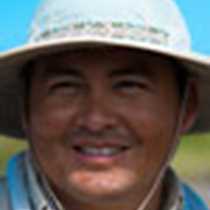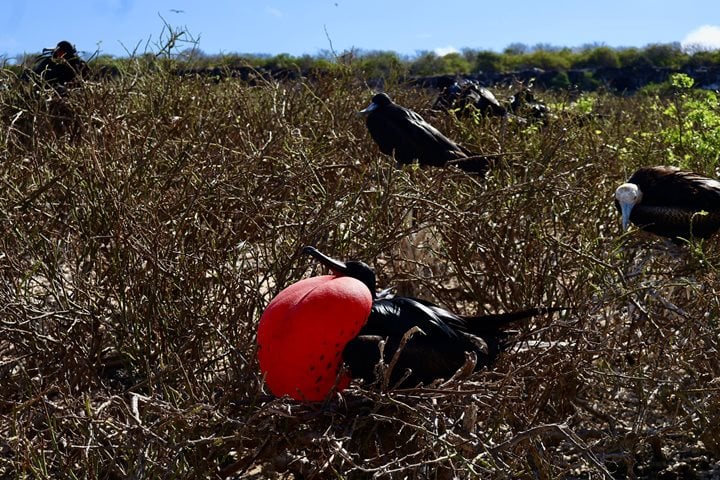Today we found ourselves in the western realm of the Galapagos Island. Towering shield volcanoes surrounded us while we were on the outer decks looking for marine mammals. After a while looking at the horizon, our efforts paid off and in the distance we spotted a pod of dolphins. The closer we got to the area the more we got surprised; the pod was over a thousand common dolphins that surrounded the National Geographic Endeavour.
Our early morning outing took place at Punta Espinoza in Fernandina Island, once known in English as Narborough Island, after John Narborough. La Cumbre Volcano rises nearly 5,000 feet in elevation and is one of the most active volcanoes found in the Galapagos. Since the island is nearly three hundred thousand years, the environment is pristine with black lava that supports pioneer life.
Punta Espinosa offers innumerable life supported directly by the rich coastal water. As soon as we landed the welcome committee was waiting for us; marine iguanas basking in the equatorial sunshine with their prehistoric face capturing our attention and taking us back in time. Sea lions and several coastal birds were also found on the coastline of Punta Espinoza. The path, made of natural slabs of basaltic lava known as “Pahoehoe,” lead us to the nesting site of the flightless cormorants.
After lunch, the National Geographic Endeavour took us to the northern volcano of Isabela Island, which is partially collapsed. Punta Vicente Roca is a refugee and resting place for the green pacific sea turtle. Our snorkeling outing was pleasant in this calm water and the fantastic landscape made it memorable. Cormorants, penguins and sea lions delighted us for over an hour during our quest of the underwater realm. Colorful fish and birds were also interacting while we spent some time cruising along the coastline in the Zodiacs. The day ended crossing the Equator at sunset as we gathered together at the bow to raise a glass of champagne to let go of another remarkable day in the Galapagos Islands.






